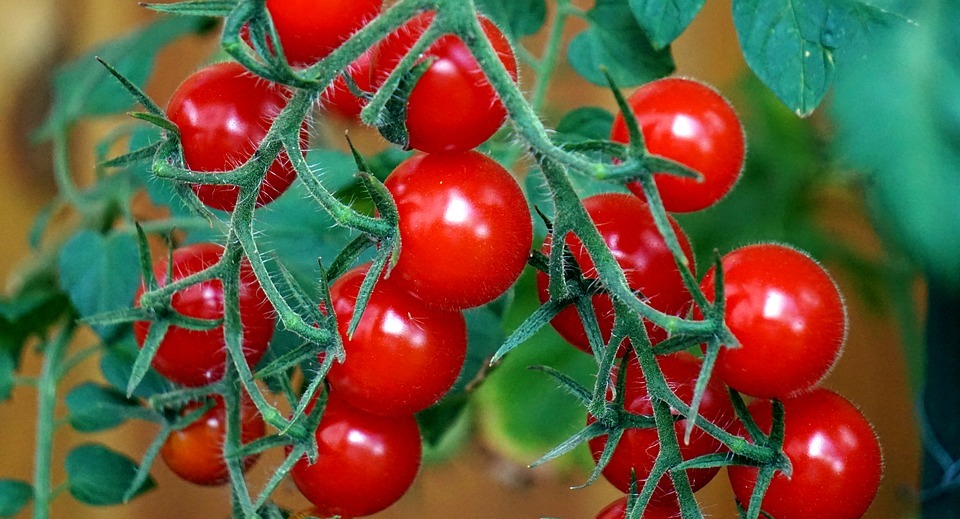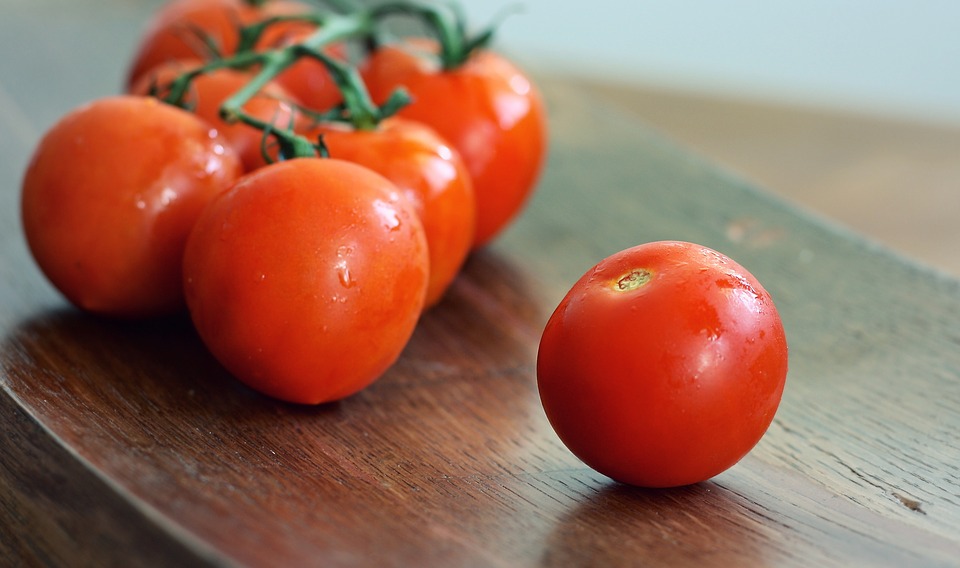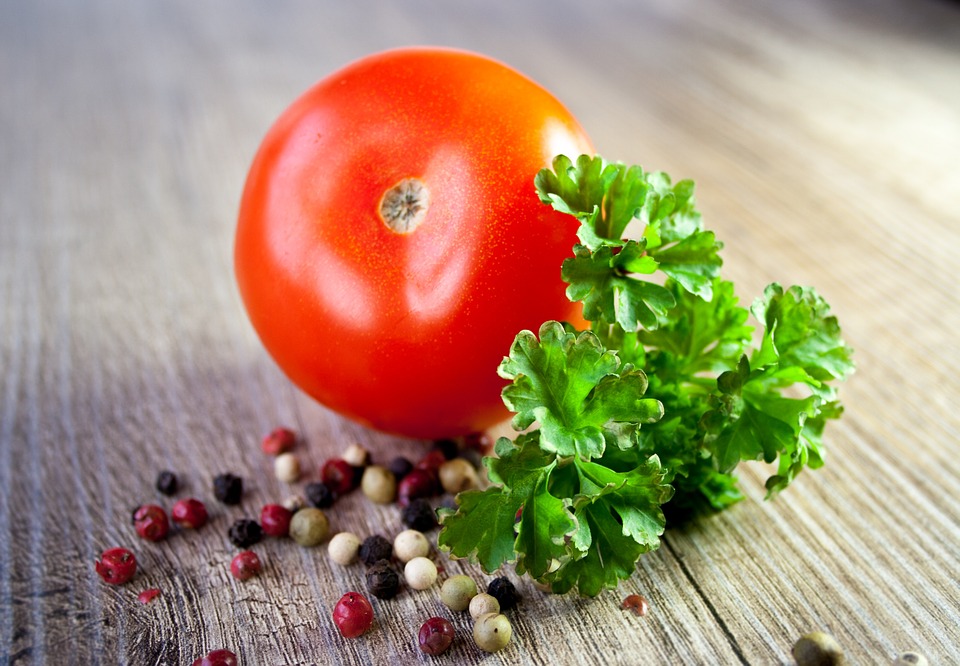This article dives deep into the often debated topic of tomatoes and dogs. We'll dissect the truth behind tomato toxicity, revealing the parts of the plant that pose a danger and those that can be considered safe (with caution). We'll explore the warning signs of tomato poisoning in dogs, guiding you through the steps to take if you suspect your furry friend has nibbled on a tomato. Finally, we'll address common questions surrounding tomatoes and canine health.
Part 1: The Science Behind Tomato Toxicity

1.1. The Nightshade Family: A Source of Solanine
Tomatoes belong to the nightshade family (Solanaceae), a group that also includes potatoes, eggplant, and peppers. This family is known for containing a naturally occurring glycoalkaloid called solanine. Solanine acts as a defense mechanism for these plants, deterring pests and insects from devouring them.
1.2. The Distribution of Solanine
Solanine is not uniformly distributed throughout the tomato plant. It's found in varying concentrations, with the highest levels concentrated in specific parts:
- Leaves and Stems: The leaves and stems of the tomato plant boast the highest concentration of solanine. These parts are considered highly toxic to dogs and should be avoided entirely. Even a small ingestion can lead to serious health complications.
- Unripe Tomatoes (Green): While unripe tomatoes have less solanine than leaves and stems, they still contain a significant amount, making them toxic to dogs. The green colour is a visual indicator of a higher solanine content.
- Ripe Tomatoes (Red): Ripe tomatoes contain the lowest concentration of solanine. While generally considered safe for dogs in small amounts, moderation is crucial. Overindulging in ripe tomatoes can still cause digestive upset in some dogs.
1.3. Solanine's Impact on the Body
Solanine is toxic to dogs because it interferes with their nervous system, causing a range of symptoms. It can disrupt the transmission of nerve impulses, leading to:
- Muscle weakness: Dogs might experience lethargy, difficulty walking, or tremors.
- Gastrointestinal distress: Vomiting, diarrhoea, and abdominal pain are common symptoms.
- Neurological problems: In severe cases, solanine poisoning can cause seizures, paralysis, and even death.
Part 2: Symptoms of Tomato Poisoning in Dogs

After ingesting toxic parts of the tomato plant, dogs may display a variety of symptoms. The severity of these symptoms depends on the amount of solanine consumed, the size of the dog, and their individual sensitivity.
2.1. Early Warning Signs
Early detection is crucial for effective treatment. Watch out for these initial symptoms:
- Gastrointestinal distress: Vomiting, diarrhoea, and abdominal pain are often the first signs of tomato poisoning. These symptoms may appear within a few hours of ingestion.
- Lethargy and Weakness: Dogs might become sluggish, unwilling to play, or have difficulty standing up.
- Excessive Drooling: An increase in salivation can be another early indicator of solanine poisoning.
2.2. Severe Symptoms
If left untreated, the symptoms can progress to more serious complications:
- Neurological problems: Seizures, tremors, muscle weakness, and paralysis can occur in severe cases.
- Cardiovascular issues: Rapid heartbeat, irregular breathing, and even respiratory failure can develop.
- Dilated Pupils: Enlarged pupils are a sign of neurological involvement and can indicate a more serious situation.
Part 3: What to Do if Your Dog Eats a Tomato

Prompt action is essential if you suspect your dog has eaten any part of a tomato plant. Early intervention can significantly improve the chances of a positive outcome.
3.1. Act Quickly: Immediate Steps
If you witness your dog consuming a tomato, follow these steps:
- Remove the tomato: Immediately remove any remaining tomato from your dog's reach to prevent further ingestion.
- Contact your veterinarian: Call your veterinarian immediately and explain the situation. They will assess the situation and provide guidance on what to do next.
- Monitor your dog closely: Observe your dog for any signs of illness and report any changes to your veterinarian.
3.2. The Importance of Veterinary Assessment
Never attempt to induce vomiting in your dog without the explicit instruction of your veterinarian. Inducing vomiting can sometimes worsen the situation and cause further complications. Your veterinarian will determine if inducing vomiting is necessary based on the specific circumstances of your dog's situation.
Part 4: Safe Alternatives to Tomatoes for Dogs
While ripe tomatoes in moderation might be safe for some dogs, there are many delicious and safe alternatives that you can offer as treats:
- Fruits: Apples (without seeds and core), bananas, blueberries, strawberries, mangoes, and melons (without the rind)
- Vegetables: Carrots, green beans, sweet potatoes, cucumber, zucchini, broccoli (cooked), and pumpkin (cooked)
- Meat-based treats: Cooked chicken, turkey, beef, and lamb (ensure it's cooked thoroughly and free from bones)
Part 5: Can Dogs Eat Cooked Tomatoes?
The safety of cooked tomatoes for dogs is a topic of ongoing discussion. While cooking breaks down some of the solanine, it doesn't eliminate it entirely. Therefore, cooked tomatoes should still be given with caution and in small amounts.
5.1. The Risks of Cooked Tomatoes
- Potential for gastrointestinal upset: Even cooked tomatoes can cause digestive issues in sensitive dogs, especially if consumed in large quantities.
- Remaining solanine: Cooked tomatoes still contain some residual solanine, which can pose a risk to dogs, particularly those with pre-existing health conditions.
- Added ingredients: Cooked tomatoes often contain other ingredients such as onions, garlic, or spices that can be toxic to dogs.
5.2. When Cooked Tomatoes Might Be Acceptable (With Caution)
If you decide to offer cooked tomatoes to your dog, follow these guidelines:
- Ripe tomatoes only: Choose fully ripe tomatoes, as they contain the least amount of solanine.
- Thorough cooking: Cook the tomatoes thoroughly to further reduce the solanine content.
- Small portions: Start with a tiny piece and monitor your dog closely for any adverse reactions.
- Plain tomatoes only: Avoid giving cooked tomatoes with added ingredients, such as onions, garlic, spices, or sauces, as these can be harmful to dogs.
Part 6: Frequently Asked Questions (FAQs)
6.1. Are cherry tomatoes safe for dogs?
Cherry tomatoes, while smaller, still contain solanine. They should be given with caution, particularly if unripe or in large quantities.
6.2. Is tomato sauce safe for dogs?
Tomato sauce is generally not recommended for dogs. It often contains onions and garlic, which are toxic to dogs. Additionally, it may contain other ingredients like spices, herbs, and sugars that can cause digestive issues.
6.3. What if my dog ate a tomato stem or leaf?
If you suspect your dog has ingested tomato leaves or stems, contact your veterinarian immediately. These parts are highly toxic and require prompt medical attention.
6.4. Can I give my dog tomato juice?
Tomato juice is not recommended for dogs. It often contains added sugars and other ingredients that can be harmful.
6.5. Are tomato plants poisonous to dogs?
Yes, all parts of the tomato plant, including the leaves, stems, unripe fruits, and even the vines, are poisonous to dogs due to their solanine content.
6.6. How long does it take for tomato poisoning to show symptoms?
Symptoms of tomato poisoning can appear within a few hours of ingestion, but they can also take up to 24 hours to manifest.
6.7. What is the best way to prevent tomato poisoning in dogs?
The best way to prevent tomato poisoning is to keep all parts of the tomato plant out of reach of your dog. If you have a tomato plant in your garden, ensure it's securely fenced off. When handling tomatoes, be mindful of any scraps or fallen leaves that your dog might be tempted to eat.
Part 7: Conclusion
While ripe tomatoes in moderation might be safe for some dogs, it's always advisable to err on the side of caution. The leaves, stems, and unripe fruits are highly toxic and should be avoided completely. If you suspect your dog has ingested any part of a tomato plant, seek veterinary attention immediately. By understanding the risks and taking necessary precautions, you can ensure your canine companion remains healthy and happy.
Everyone is watching
-

Can Dogs Eat Bananas? A Guide to Safe Treats
DOGS & PUPPIESThis comprehensive guide will delve into the world of canine nutrition, focusing on the popular question: can ...
-

Can Dogs Eat Oranges? (Is It Safe or Toxic?)
DOGS & PUPPIESThis article delves into the question of whether dogs can safely consume oranges. We'll explore the nutrition...
-

Can Dogs Eat Grapes? The Shocking Truth About This Fruit
DOGS & PUPPIESThis article delves into the controversial topic of grapes and dogs, exploring the potential dangers associate...
-

Why Do Dogs Eat Poop? Understanding Coprophagia in Dogs
DOGS & PUPPIESThis article delves into the perplexing phenomenon of coprophagia, the act of eating faeces, in dogs. We explo...
-

Can Dogs Eat Shrimp? A Guide to Safety and Risks
DOGS & PUPPIESThis comprehensive guide dives into the world of shrimp and dogs, exploring the potential benefits and risks a...
